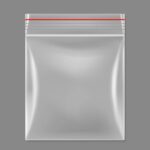

Did you know that shrink wrap is a great way to protect and/or store your boat?
Whether you’re looking to keep your boat stored or simply protect it over the winter months, shrink wrap is the foolproof solution.
Why Shrink Wrap?
Unlike other methods, shrink wrap keeps out rain, snow, ice and UV light. When properly installed, shrink wrap will not leak or collapse from weight like a tarp. Shrink wrap is constructed of polyethylene, which inhibits UV light. It is shrinks up when heated to create a very tight seal. You would not be able to achieve such a seal with tarps and ropes.
What’s the Catch?
There has to be a downside to completely weatherproofing your vessel, right? Well, the only downside to shrink wrap is the potential cost. However, the cost is well-worth it in the long run. Shrink wrap protects your boat against harsh weather conditions. Weather damage could cost thousands to repair, making shrink wrap a cost that is well worth it.
How-To
For a complete how-to guide, please see below for Dr. Shrink’s instructions on Shrink Wrapping a Boat for Storage.
Shrink Wrapping A Boat For Storage
BEFORE INSTALLING WRAP
- Tape over fuel vents (contact your boat dealer for help in locating fuel vent).
- Pad all sharp objects with foam padding, shrink-wrap, tape, etc.
- Be sure that film does not drag on the ground or floor (static electricity in the film attracts dirt and dust which won’t allow the film to weld properly.)
SHRINKING
Once the film is on the boat (after you have heat-welded around the perimeter band) there are a few steps that can help in achieving a wrinkle-free, tight cover. You must install the belly bands immediately after heat welding around the perimeter band on the boat. These taut straps pull the slack from the wrap allowing it to become tighter when heated. The shrinking order is as follows: Seal all pleats in cover, including the bow and stern. Begin applying heat at the bottom of the cover near one end (never in the middle). Guide the shrinking with the heat gun (use it as if you were spray painting) to the other end of the boat, up to the rub rail. Starting at the bottom of the cover allows the heat to rise and helps you shrink more quickly. Now you can shrink the top; be careful not to put excess heat on the corners or sharp protruding objects. Avoiding these areas allows the shrink wrap to maintain its full thickness at these points.
HOLE PATROL
When the cover is completely shrunk, you must check for burn or puncture holes in the cover. A hole in the shrink wrap will not tear or rip, but will certainly allow the elements into the boat. The most effective method of repairing a hole or weak spot is to use shrink wrap tape which is made of the same materials as the wrap itself. When shrink wrap tape is applied to a hole, or to reinforce over a sharp object, it MUST be rubbed to remove air bubbles and activate the adhesives in the tape. The tape should also be lightly warmed using the gun so that the tape will adhere better.
REMOVE TAPE FROM FUEL VENT VENTS AND DOORS
Vents and doors are installed after the cover is completely shrunk. They are not heated onto the cover at all. Vents are self-adhesive and the adhesive on them must be hand warmed and rubbed to have a complete seal. Doors are taped to the cover using either 2” or 4” shrink wrap tape. The door is then unzipped and a hole cut underneath the zippered area.
Check out more How-To shrink wrap guides on Dr.Shrink.com!







Comments